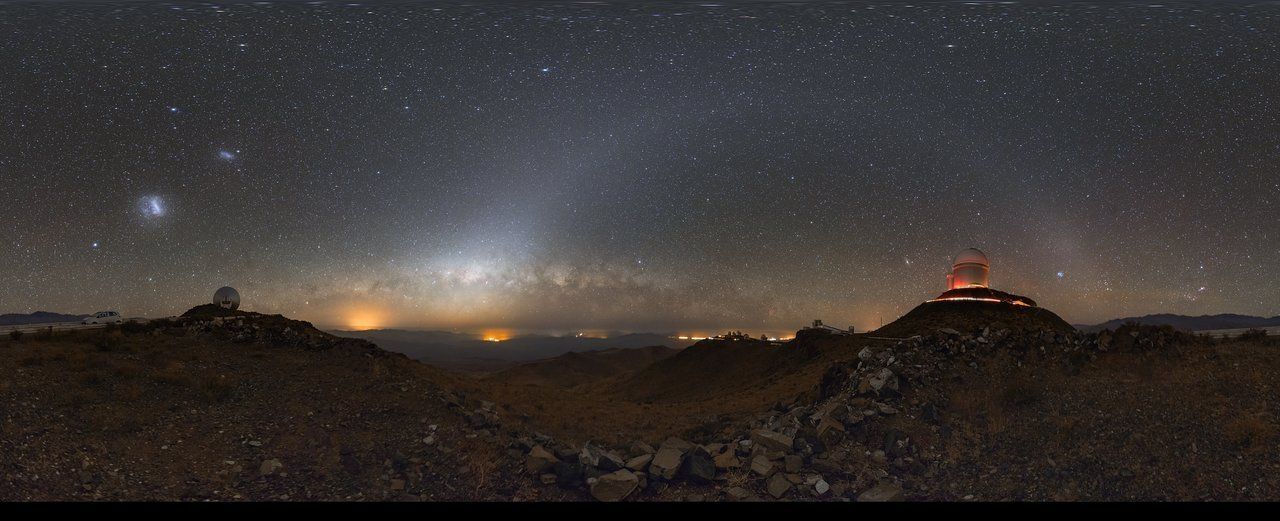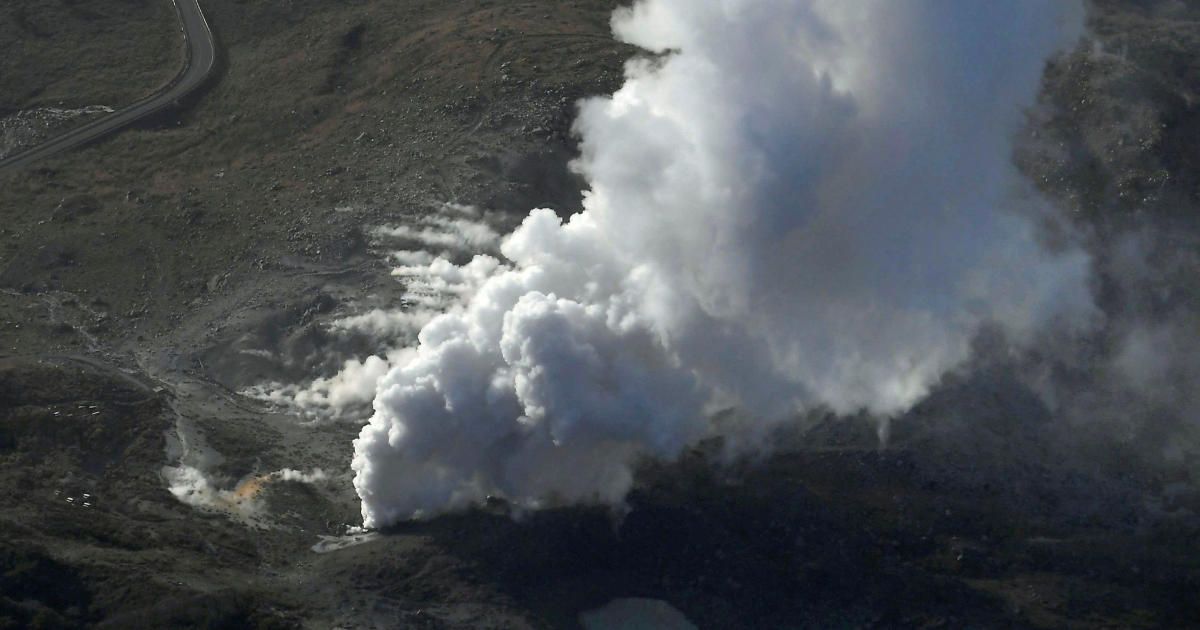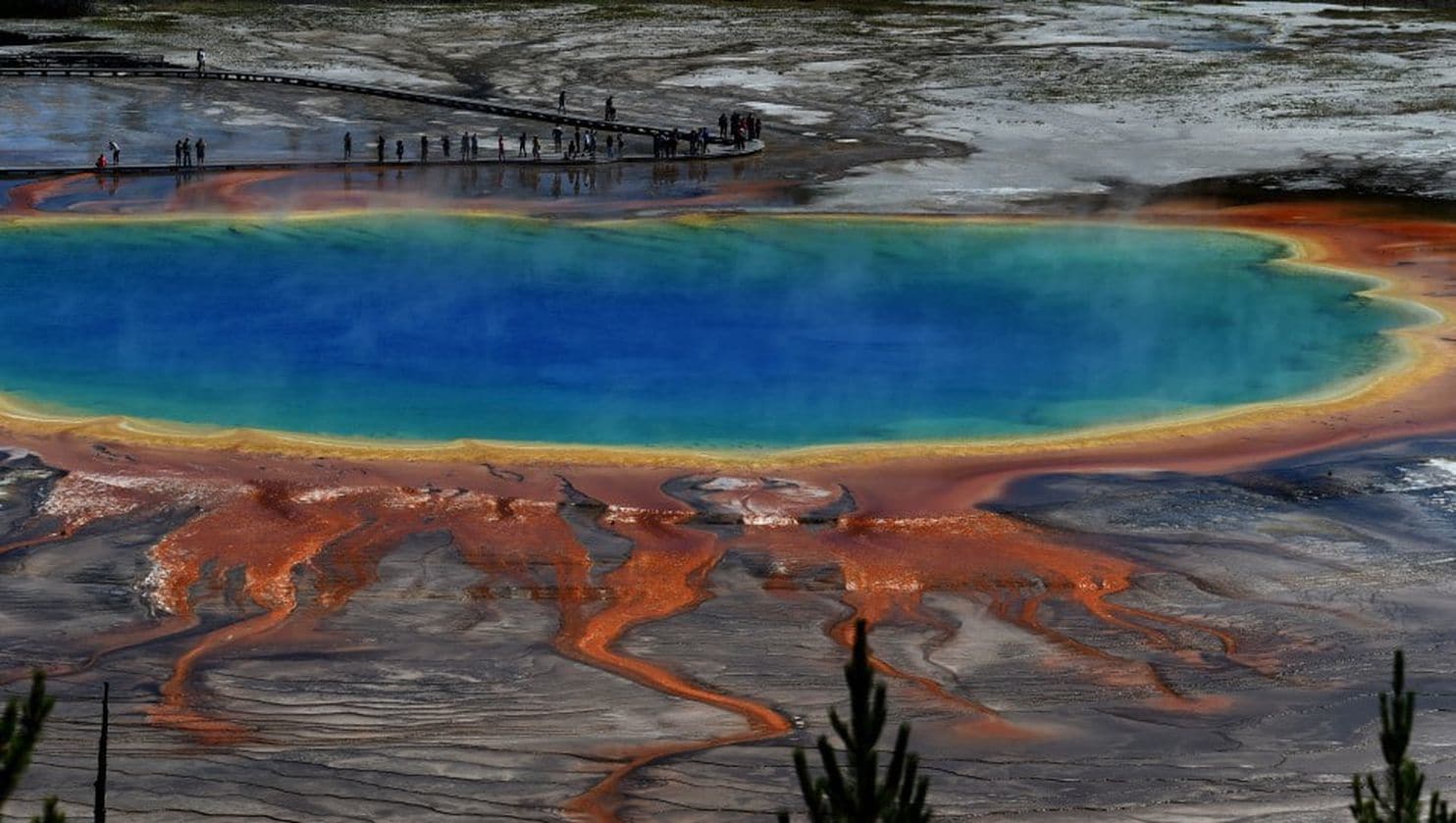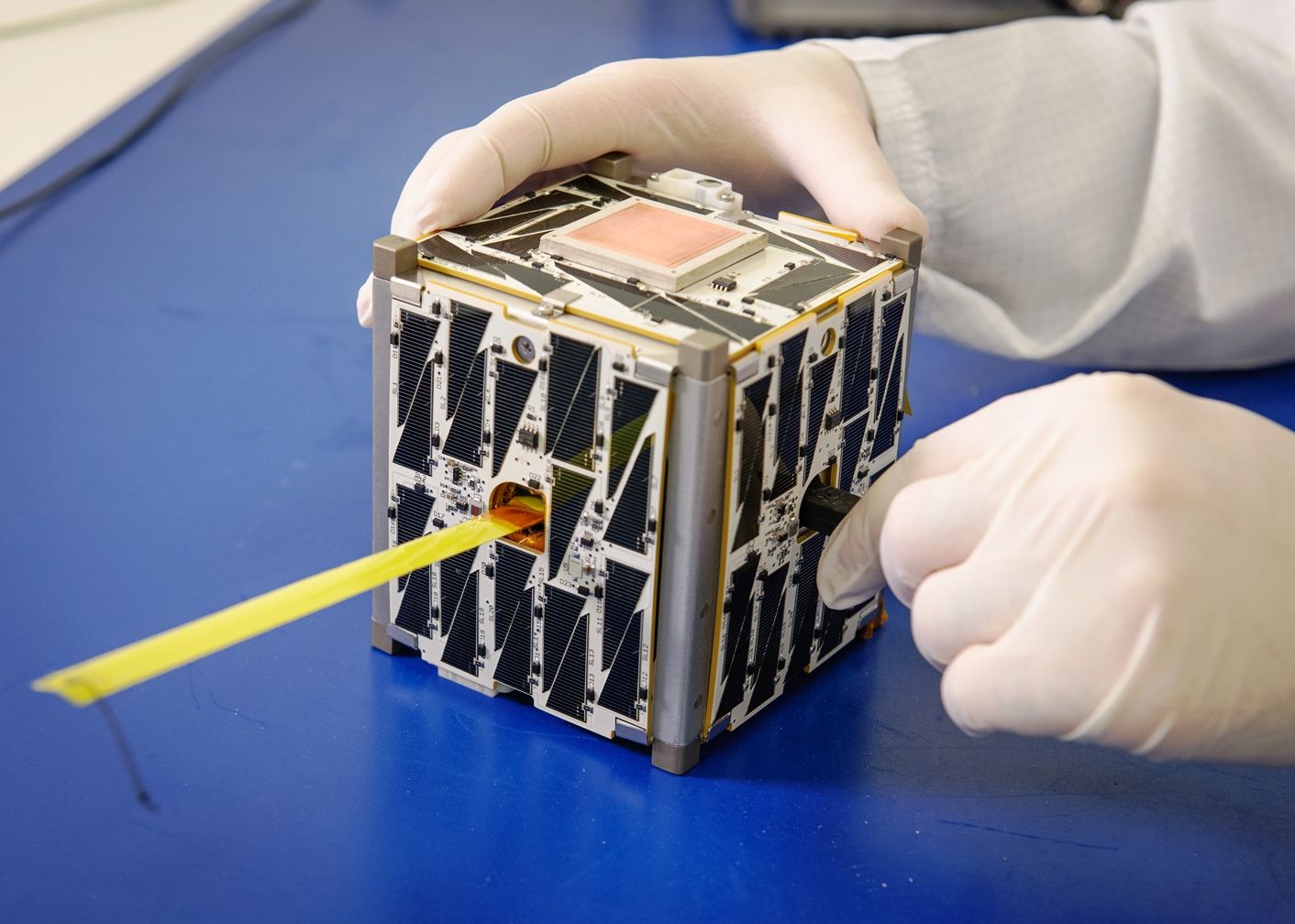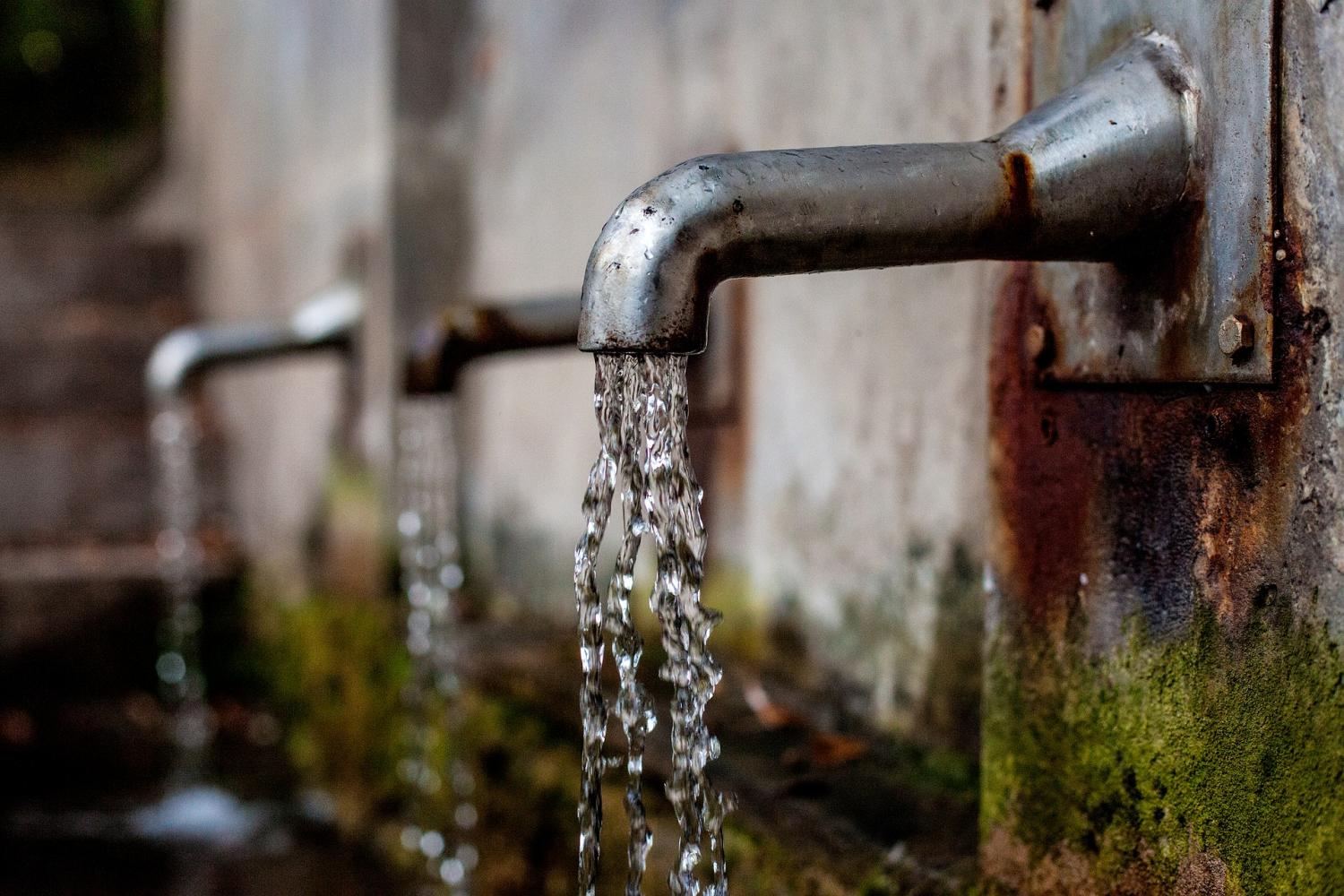This full 360° view of La Silla Observatory showcases the mountaintop telescopes in all their glory. The telescopes are silhouetted against a starry background, with the Milky Way visible close to the horizon, the column and band of the zodiacal light across the sky, and the Magellanic Clouds rising higher in the sky.
La Silla was built in 1969 as ESO’s very first observatory, at which point it became the largest astronomical observatory of its time, leading Europe to the frontline of astronomical research. Since then, it has led to an enormous number of scientific discoveries, including several “firsts”.
This deep sky view was achieved using the Vixen Polarie mount.
